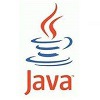HDwiki+discuz在启用https下的整合问题
这几天在折腾HDwiki+discuz,系统环境是FreeBSD 10.4, PHP 5.6(HDwiki要求),PHP-PDO_MYSQL,PHP-GD,PHP-XML等,MYSQL 5.7
HDwiki 5.1(6.0安装成功后打开前台,提示http 500错误,找不到原因)
discuz X3.4
因为宽带运营商关闭了80端口,443端口有开,所以就直接用上https,结果问题一大堆。
首先,discuz和ucenter在https下通信失败,后来找到修改方法:
DISCUZ 开启https后ucenter通信失败解决方法,一般是做完301重定向https后通信失败的,下面是具体解决方法:
打开目录 uc_server/model/misc.php 文件;找到69行,插入下面代码:
......
$port = !empty($matches['port']) ? $matches['port'] : ($matches['scheme'] == 'https' ? 443 : 80);
//以下为插入代码
if(substr($url,0,5)=='https'){
$ch = curl_init($url);
curl_setopt($ch, CURLOPT_RETURNTRANSFER, 1);
if($post){
curl_setopt($ch, CURLOPT_POST, 1);
curl_setopt($ch, CURLOPT_POSTFIELDS, $post);
}
if($cookie){
curl_setopt($ch, CURLOPT_COOKIE, $cookie);
}
curl_setopt($ch, CURLOPT_SSL_VERIFYPEER, FALSE);
return curl_exec($ch);
}
//插入代码结束
if($post) {
$out = "POST $path HTTP/1.0\r\n";
......接下来设置HDwiki和ucenter,问题比较多了。
一开始,只要设置https,就提示“您输入的URL地址不正确!”
网上也没有任何资料,经过调试,发现要修改HDwiki目录下的control/admin_setting.php的659行
原来长这样:
if(empty($ucapi) || !preg_match("/^(http:\/\/)/i", $ucapi)) {
修改成这样:
if(empty($ucapi) || !preg_match("/^((http:|https:)\/\/)/i", $ucapi)) {这个问题解决后,出现的是“uc_url_unreachable”错误。走了不少弯路后,发现还是https的问题。
admin_setting.php调用了api/uc_client/client.php里的uc_fopen(),而这个函数使用fsockopen模拟浏览器进行访问。
并且只有拼接了http协议的情况。对这个接口文件的分析,见这篇文章http://blog.csdn.net/yanhui_wei/article/details/17919645
综合这些分析,比较一下discuz的uc_server/model/misc.php和HDwiki下的api/uc_client/client.php,会发现:
discuz的uc_server/model/misc.php里的function dfopen2()和 function dfopen()与HDwiki下的api/uc_client/client.php的uc_fopen2()和uc_fopen()基本上是类似的。
所以解决方法如下:
1、拷贝discuz下的uc_client目录,替换HDwiki下的api/uc_client目录
2、修改api/uc_client/client.php文件,重点在于用function dfopen2()和 function dfopen()的内容替换uc_fopen2()和uc_fopen(),修改完成的结果如下:
function uc_fopen2($url, $limit = 0, $post = '', $cookie = '', $bysocket = FALSE, $ip = '', $timeout = 15, $block = TRUE, $encodetype = 'URLENCODE') {
$__times__ = isset($_GET['__times__']) ? intval($_GET['__times__']) + 1 : 1;
if($__times__ > 2) {
return '';
}
$url .= (strpos($url, '?') === FALSE ? '?' : '&')."__times__=$__times__";
return uc_fopen($url, $limit, $post, $cookie, $bysocket, $ip, $timeout, $block, $encodetype);
}
function uc_fopen($url, $limit = 0, $post = '', $cookie = '', $bysocket = FALSE , $ip = '', $timeout = 15, $block = TRUE, $encodetype = 'URLENCODE') {
$return = '';
$matches = parse_url($url);
$scheme = $matches['scheme'];
$host = $matches['host'];
$path = $matches['path'] ? $matches['path'].($matches['query'] ? '?'.$matches['query'] : '') : '/';
$port = !empty($matches['port']) ? $matches['port'] : ($matches['scheme'] == 'https' ? 443 : 80);
/*
//以下内容可以不需要
if($scheme=='https'){
$curl = curl_init();
curl_setopt($curl, CURLOPT_URL, $url);
curl_setopt($curl, CURLOPT_USERAGENT, $_SERVER['HTTP_USER_AGENT']);
if($post) {
curl_setopt($curl, CURLOPT_POST, 1);
curl_setopt($curl, CURLOPT_POSTFIELDS, $post);
}
if($cookie) {
curl_setopt($curl, CURLOPT_COOKIE, $cookie);
}
curl_setopt($curl, CURLOPT_TIMEOUT, $timeout);
curl_setopt($curl, CURLOPT_HEADER, 0);
curl_setopt($curl, CURLOPT_RETURNTRANSFER, 1);
$return = curl_exec($curl);
if (curl_errno($curl)) {
echo '<pre><b>错误:</b><br />'.curl_error($curl);
}
curl_close($curl);
return $return;
}
// 结束
*/
if($post) {
$out = "POST $path HTTP/1.0\r\n";
$header = "Accept: */*\r\n";
$header .= "Accept-Language: zh-cn\r\n";
$boundary = $encodetype == 'URLENCODE' ? '' : ';'.substr($post, 0, trim(strpos($post, "\n")));
$header .= $encodetype == 'URLENCODE' ? "Content-Type: application/x-www-form-urlencoded\r\n" : "Content-Type: multipart/form-data$boundary\r\n";
$header .= "User-Agent: $_SERVER[HTTP_USER_AGENT]\r\n";
$header .= "Host: $host:$port\r\n";
$header .= 'Content-Length: '.strlen($post)."\r\n";
$header .= "Connection: Close\r\n";
$header .= "Cache-Control: no-cache\r\n";
$header .= "Cookie: $cookie\r\n\r\n";
$out .= $header.$post;
} else {
$out = "GET $path HTTP/1.0\r\n";
$header = "Accept: */*\r\n";
$header .= "Accept-Language: zh-cn\r\n";
$header .= "User-Agent: $_SERVER[HTTP_USER_AGENT]\r\n";
$header .= "Host: $host:$port\r\n";
$header .= "Connection: Close\r\n";
$header .= "Cookie: $cookie\r\n\r\n";
$out .= $header;
}
$fpflag = 0;
if(!$fp = @fsocketopen(($scheme == 'https' ? 'ssl' : $scheme).'://'.($scheme == 'https' ? $host : ($ip ? $ip : $host)), $port, $errno, $errstr, $timeout)) {
$context = array(
'http' => array(
'method' => $post ? 'POST' : 'GET',
'header' => $header,
'content' => $post,
'timeout' => $timeout,
),
);
$context = stream_context_create($context);
$fp = @fopen($scheme.'://'.($scheme == 'https' ? $host : ($ip ? $ip : $host)).':'.$port.$path, 'b', false, $context);
$fpflag = 1;
}
if(!$fp) {
return '';
} else {
stream_set_blocking($fp, $block);
stream_set_timeout($fp, $timeout);
@fwrite($fp, $out);
$status = stream_get_meta_data($fp);
if(!$status['timed_out']) {
while (!feof($fp) && !$fpflag) {
if(($header = @fgets($fp)) && ($header == "\r\n" || $header == "\n")) {
break;
}
}
$stop = false;
while(!feof($fp) && !$stop) {
$data = fread($fp, ($limit == 0 || $limit > 8192 ? 8192 : $limit));
$return .= $data;
if($limit) {
$limit -= strlen($data);
$stop = $limit <= 0;
}
}
}
@fclose($fp);
return $return;
}
}
....
//找到同步登录登出代码,修改成以下内容
/**
* 进入同步登录代码
*
* @param int $uid 用户ID
* @return string HTML代码
*/
function uc_user_synlogin($uid) {
$uid = intval($uid);
$return = uc_api_post('user', 'synlogin', array('uid'=>$uid));
return $return;
}
/**
* 进入同步登出代码
*
* @return string HTML代码
*/
function uc_user_synlogout() {
$return = uc_api_post('user', 'synlogout', array());
return $return;
}
....
然后就可以看到一切都正常了。
另外需要注意的是,必须保证ssl证书在有效期内,因为这个,浪费了2天的时间。




